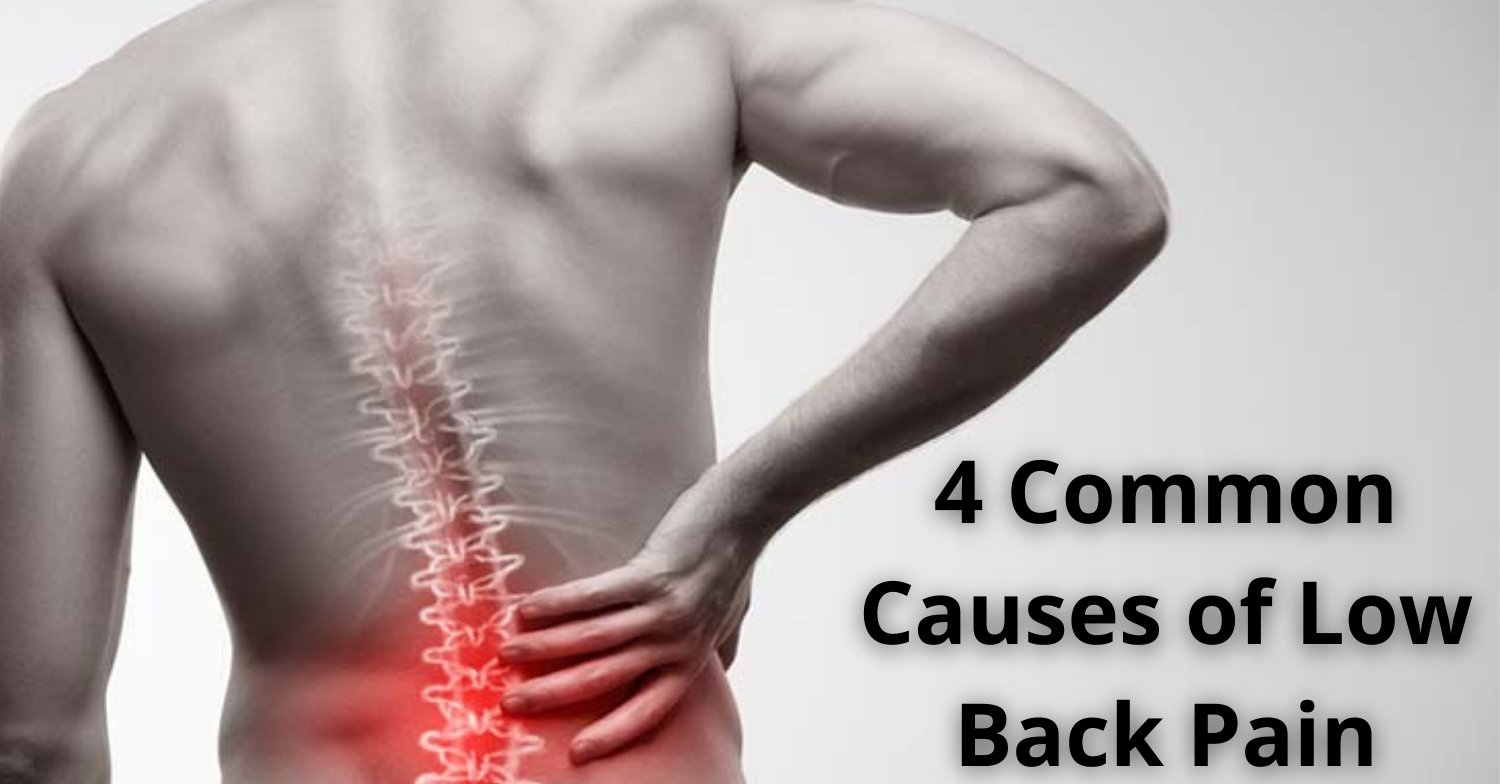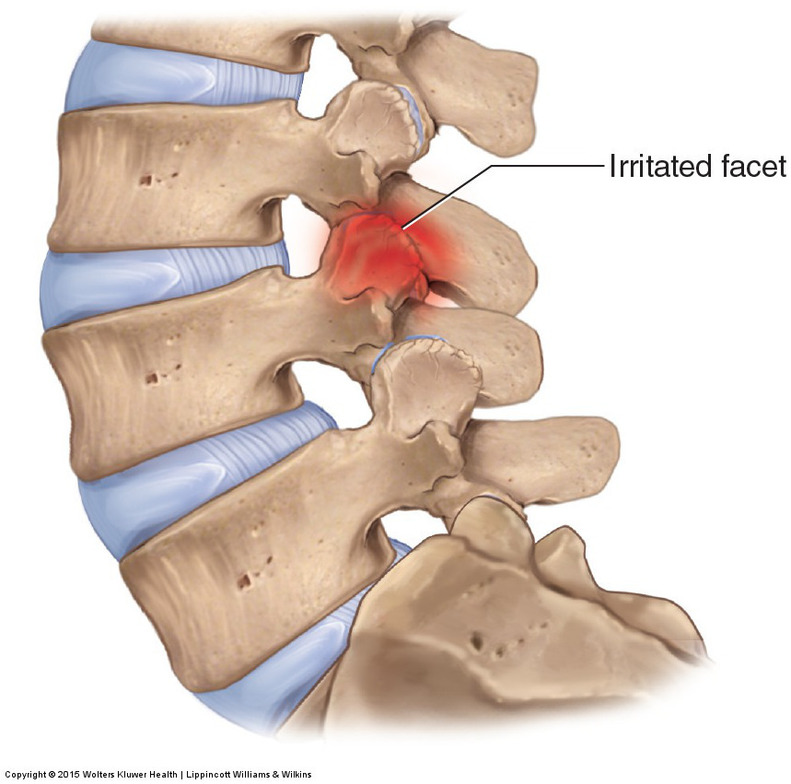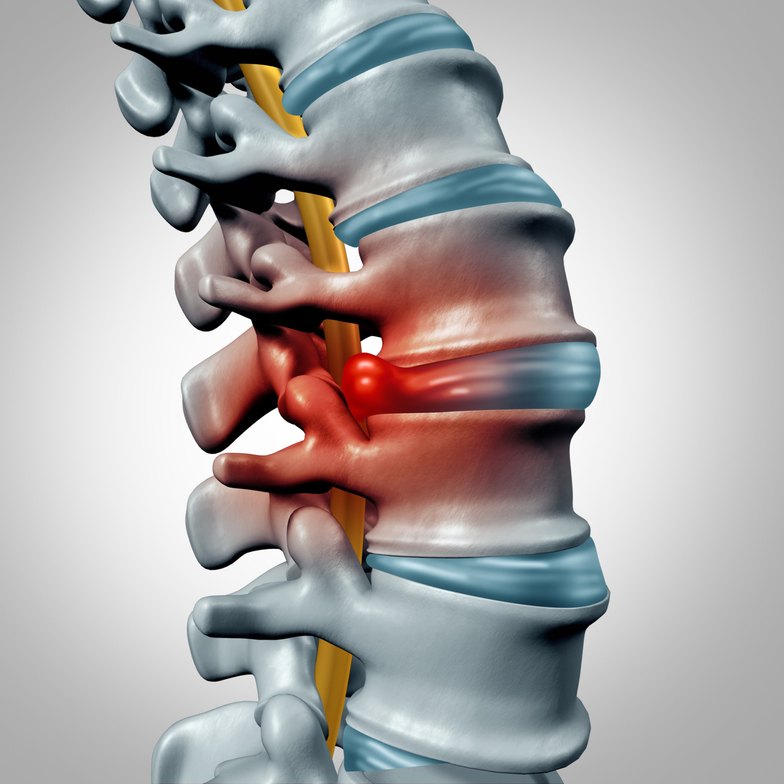
Low back pain is one of the most common musculoskeletal issues troubling the Canadian population. Statistics show that 80% of the population will suffer from low back pain at least once in their lifetime. With winter upon us in Saskatoon, low back pain becomes more common due to decreased activity, interrupted by vigorous snow shoveling. The great news is that more than 90% of those with low back pain report significant improvement within one month of receiving treatment! However, the right treatment is necessary, as there are numerous potential causes of low back pain. There are 4 main causes of low back pain:
- Lumbar Joint Irritation
- Lumbar Sprain/Strains
- Lumbar Disc Injuries
- Lumbar Stenosis
Low Back Pain due to  Lumbar Joint Irritation
Lumbar Joint Irritation
Facet joints are the small joints in our back that connect one vertebra to another. These joint surfaces can become irritated, resulting in deep achy back pain. You may experience that it is painful to bend backward, rotate, or bend to the side, and your pain may get better when sitting down. You may also notice that your back is fairly stiff, especially first thing in the morning. Lumbar joint irritation responds very well to conservative care! Chiropractic adjustments and exercises that encourage your low back to move properly work great in decreasing low back pain caused by lumbar joint irritation!

Low Back Pain due to Lumbar Sprain/Strains
Our low backs are filled with muscles and ligaments that support our back. Sprains and strains are the results of these tissues being stretched and damaged. A sprain means that the tough, durable ligaments that hold your bones together have been damaged, while strain means that your muscles or tendons that move your trunk have been disturbed. These tissues are very strong and resilient! Sprain/strain injuries are uncommon in everyday life, with most occurring after a traumatic accident such as a motor vehicle collision, or an athletic injury.
Low Back Pain due to Lumbar Disc Injuries
Your low back consists of five vertebrae with flexible cushions called intervertebral discs separating each set of vertebrae. A disc is made up of two components. The inner disc, called the nucleus pulposis, is like a ball of jelly about the size of a marble. The nucleus pulposis is surrounded by the outer part of the disc called the annulus fibrosis. Damage to the discs of the lumbar spine is the most common reason for low back pain. This is the cause of about 50% of people who have low back pain and is a very common injury to experience when shoveling snow. These injuries typically occur due to repetitive forward bending, or heavy lifting. This can cause the nucleus pulposis to start pushing back against the annulus fibrosis, eventually causing tears in the inner parts of the annulus. You may notice that your low back pain is worst first thing in the morning, gets worse if you sit for long periods, or bend forward. If the injury to your disc continues to progress, it may result in sciatica type symptoms, where you notice numbness or tingling in your legs. If this sounds like you, don’t be concerned! Disc injuries are no longer a sure sign of needing surgery. Recent research shows that 97% of lumbar disc injuries can be managed by conservative care!

Low Back Pain due to Lumbar Stenosis
Stenosis is the least common cause for people to have low back pain. It is most common in those above the age of 70. Stenosis is the result of the narrowing of the spinal canal, resulting in compressing the spinal cord or nerve roots exiting the spine. This can be due to numerous bulging discs, enlargement of the joints due to arthritis, or thickening of ligaments surrounding the spine. This is typically seen in the elderly who have trouble walking and find it easier to walk if they can lean forward on a cart or walker.
Now What?
If you are experiencing low back pain, the right treatment for the right injury will get you the best results. E3 Chiropractic + Wellness is here to help anyone in Saskatoon experiencing low back pain! We will perform a thorough examination to determine the root cause of your pain and give you the tools you need to get free from pain so that your body performs and feels better than you ever thought possible.





